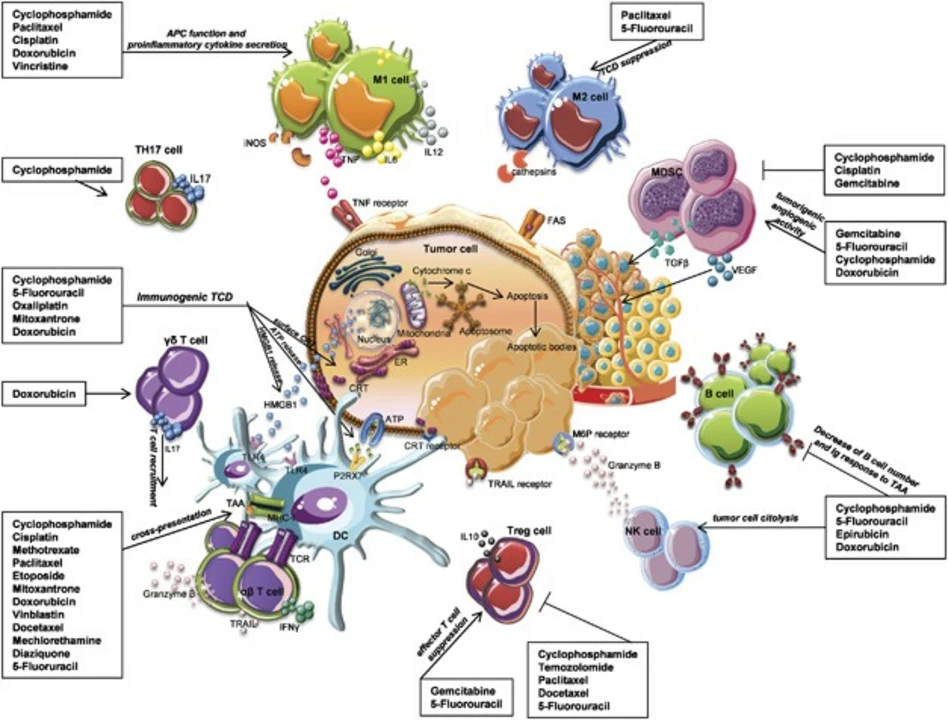As a blogger, I've recently come across the topic of Cyclophosphamide and its role in the treatment of lymphoma. This chemotherapy drug has been quite effective in destroying cancer cells by interfering with their DNA. From what I've learned, it's often used in combination with other medications to treat different types of lymphoma, including Hodgkin's and non-Hodgkin's. The side effects can be challenging for some patients, but the overall effectiveness of Cyclophosphamide in improving survival rates and reducing symptoms is significant. I'm really intrigued by the ongoing research in this area and how it's making a difference in the lives of lymphoma patients.
Lymphoma treatment: what works, what to expect
Not all lymphomas are the same. Some are aggressive and need fast treatment; others grow slowly and can be watched. The type (Hodgkin vs non-Hodgkin), exact subtype, and stage decide the plan. I’ll walk you through the common options, likely side effects, and smart questions to ask your care team.
How treatment is chosen
First doctors confirm the diagnosis with a biopsy and order PET-CT or CT scans plus blood tests. That tells them the subtype and how far it has spread. Early-stage, localized disease often gets radiation or short chemo courses. Advanced or fast-growing lymphomas usually need multi-drug chemotherapy. Some slow-growing types are safe to watch until symptoms appear.
Key point: the exact subtype matters. For example, classic Hodgkin lymphoma often responds very well to ABVD or similar chemo, while diffuse large B-cell lymphoma (DLBCL) commonly uses R-CHOP. Follicular lymphoma may be monitored, treated with single-agent therapies, or given targeted drugs depending on symptoms.
Treatment options you’ll hear about
Chemotherapy: Many regimens combine drugs to kill cancer cells. Expect fatigue, nausea, lower blood counts, and hair thinning depending on the drugs. Your team gives anti-nausea meds and growth factors when needed.
Radiation: Used for limited-stage disease or to control specific sites. Side effects are usually local—skin changes, tiredness, or problems tied to the area treated.
Targeted therapy: These drugs go after specific features of cancer cells. Examples include anti-CD20 antibodies (rituximab) added to chemo for certain B-cell lymphomas, and small molecules for mantle cell or CLL types. Side effects differ from traditional chemo and can be milder for some patients.
Immunotherapy and CAR-T: Checkpoint inhibitors can help in some Hodgkin and non-Hodgkin cases. CAR-T cell therapy is a powerful option for certain relapsed or refractory B-cell lymphomas—it can work when other treatments fail but can cause intense side effects and needs hospitalization at specialized centers.
Stem cell transplant: Used after high-dose chemo to reset the bone marrow in relapsed or high-risk cases. It’s a major procedure with significant recovery time but can be lifesaving for some people.
Watchful waiting: For indolent lymphomas without symptoms, doctors often wait and monitor closely. This avoids unnecessary side effects until treatment is truly needed.
Supportive care: Infection prevention, vaccines, blood transfusions, pain control, and emotional support are part of the plan. Managing side effects keeps treatment on track and improves quality of life.
Questions to ask your oncologist: What subtype and stage is my lymphoma? What are the goals of treatment—curative or control? What are the main side effects and how will they be managed? Am I eligible for clinical trials or CAR-T? When should I seek urgent care?
Second opinions and clinical trials matter. If your case is unusual or advanced, a specialist center can offer more options. Trials often give access to new drugs that can make a difference.
Treatment for lymphoma has improved a lot. Stay proactive, keep a list of symptoms, and bring a friend to appointments—two heads catch more details than one.

